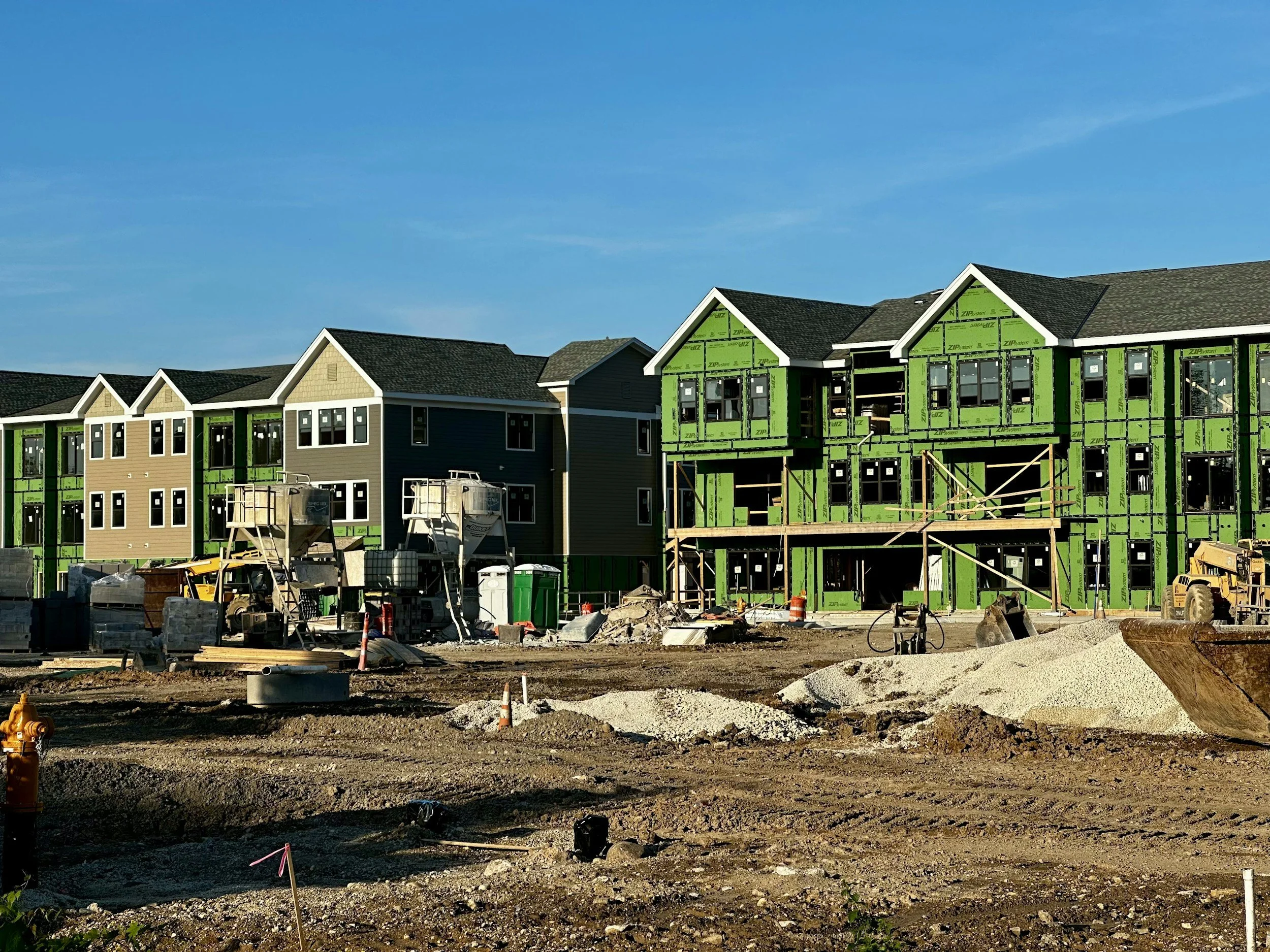Real Estate Regeneration- Are you missing out?
Reactive home building continues while old zoning laws remain unchanged.
Real Estate Regeneration
Change is the one constant in real estate. Urban sprawl, population growth, and surging resource demands have shaped how communities develop and, sometimes, decline. What served communities well 25 to 50 years ago often loses its utility and value over time.
Consider how highways bypassed once-thriving towns, leaving main streets lined with vacant buildings. The urban sprawl of the 1950s and 60s continued spreading outward, creating satellite shopping malls until many communities lost their central "core" entirely.
But something interesting is happening now. Whether driven by land prices, younger generations seeking community connection, the character of historic buildings, or their superior construction quality, there's a renewed interest in revitalizing existing structures.
It's worth noting that much of America's infrastructure is aging out. The lead pipe crisis serves as just one example of this widespread challenge.
Today's focus isn't just on healthy buildings—it's about regeneration and the tremendous opportunities this creates for real estate professionals. To understand how regeneration differs from sustainability, check out this helpful comparison: Sustainability vs. Regeneration in Real Estate.
Types of Regeneration Projects
Urban Regeneration
Former Industrial Sites
Converting old warehouses into loft apartments or mixed-use developments
Transforming abandoned factories into creative office spaces or tech hubs
Redeveloping brownfield sites into thriving residential communities
Waterfront Regeneration
Revitalizing old docklands into luxury residential and commercial areas (think London's Canary Wharf or Baltimore's Inner Harbor)
Converting former port facilities into vibrant restaurant, retail, and housing destinations
Downtown and City Center Revival
Renovating historic buildings in declining downtown areas
Creating pedestrian-friendly zones with mixed retail, dining, and residential spaces
Adaptive reuse of old department stores or office buildings
Neighborhood Regeneration
Transit-Oriented Development
Building around new or improved public transportation stations
Creating walkable communities near metro and rail lines
Distressed Neighborhood Revitalization
Systematic renovation of run-down residential areas
Community investment programs that improve infrastructure and amenities
Adaptive Reuse Projects
Popular property conversions include:
Schools transformed into apartments
Churches reimagined as event spaces or residences
Shopping malls repurposed as mixed-use communities
Hospitals converted to senior living facilities or condos
Why Regeneration Matters Now
The opportunities to repurpose buildings, revitalize commercial areas, or remediate land are growing exponentially due to aging infrastructure. Building materials, infrastructure needs, and zoning must adapt to current demands.
A Historical Perspective
While regeneration isn't new globally, it's somewhat novel in the United States because our cities are relatively young. London, for example, has been adapting for centuries. The city developed organically as an "archipelago of villages," growing "suburb by suburb like onions" rather than creating a concentrated downtown like New York's skyscraper-dense core. This organic growth pattern has allowed London's neighborhoods to survive and evolve more easily than America's concentrated urban centers.
The key takeaway? There's a significant, growing market for real estate investors and professionals specializing in regenerative real estate. This presents an opportunity not only for profit but also for value-based work that benefits both communities and clients—creating something with lasting value.
Common Triggers for Real Estate Regeneration
Understanding what drives regeneration needs helps identify opportunities:
Technological Obsolescence - Buildings lacking modern infrastructure like high-speed internet, advanced HVAC systems, adequate electrical capacity, or smart building technology
Functional Obsolescence - Physical layouts, floor plates, ceiling heights, or spatial configurations that no longer meet contemporary needs (such as compartmentalized offices when open floor plans are desired)
Economic Shifts - Changes in local or national economies that alter demand patterns, like manufacturing decline, reducing industrial space needs, or e-commerce impacting traditional retail
Demographic Changes - Population shifts, aging populations, or changing household compositions, creating different housing and commercial needs
Regulatory Changes - Updated building codes, ADA requirements, environmental regulations, or zoning laws, making older buildings non-compliant or too expensive to maintain
Market Preferences Evolution - Shifting consumer and tenant preferences (such as walkable neighborhoods over car-dependent suburbs, or boutique retail over big-box stores)
Physical Deterioration - Normal wear and tear, deferred maintenance, or structural aging, making buildings too costly to repair for their original purpose
Competition from New Development - Newer buildings with better amenities, locations, or designs, making older properties less competitive
Location Dynamics - Neighborhood transformation where changes in the surrounding area character make the original use incompatible
Changes in Industry Standards - Evolving professional standards or operational requirements that older buildings cannot accommodate without major renovation
What to Look For
Change is the bottom line. It can erode slowly, as with the decline in camera film sales, or shift suddenly due to devastating events like the Los Angeles fires, where neighborhood rebuilding becomes a complex challenge.
Gone are the days when simple fix-and-flip projects required just a handyman, fresh paint, and new carpet. Today's regeneration projects are more sophisticated—yet they also have the power to influence the healthy future of entire neighborhoods and cities. See what the regeneration experts say in future articles and podcasts.
This represents a tremendous opportunity for real estate professionals and investors alike. Those who specialize in regenerative real estate aren't just participating in a profitable market—they're shaping the sustainable future of our communities.

